Padres News: A Closer Look at Andrew Cashner’s Early Season Performance
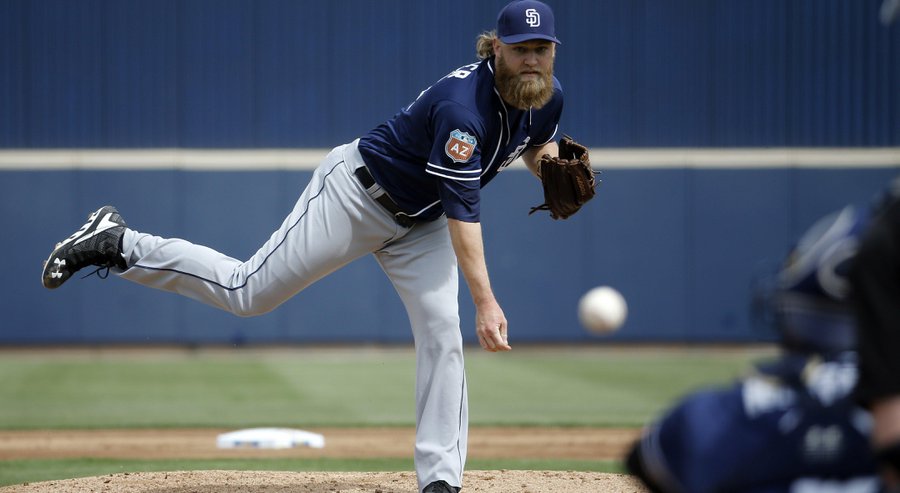
The San Diego Padres are now nine games into the season and currently sit at three wins and six losses. After an opening series sweep, in which they were outscored 25-0, the Padres took two out of three in Colorado before losing two of the first three in the four game series in Philadelphia this week. After an offensive outburst in Colorado, the Padres offense has once again been anemic over the first three games in Philly, scoring only four runs total.
Despite the continued offensive struggles, the pitching staff has performed well over the last several games, including impressive starts from Colin Rea (Seven innings pitched, one earned run on Wednesday) and Robbie Erlin (Six innings pitched, one earned run on Tuesday). Both those guys were impressive this week, but another Padre pitcher is a much more interesting case study. As is fairly obvious given the title of this post, Andrew Cashner is the subject here.
Much like the rest of his career as a San Diego Padre, Cashner’s season has already had it’s ups and downs through only two starts.
In game three of the opening series against the Los Angeles Dodgers last week, Cashner only made it through four innings, giving up five runs on six hits and earning the loss. His second start on Monday was a different result. Against the Phillies in the opener of the current series, Cashner was unable to make it out of the sixth inning, but he gave up only three earned runs in total to go along with seven hits.
Aside from his struggles in the sixth inning, with a leadoff walk and back-to-back singles before he was pulled, Cashner was highly effective, giving up only two earned runs and five hits in the five previous innings. More importantly for Cashner, he walked only one batter, the first of the sixth inning, compared to the two he walked in the opener. Beyond that, Cashner also threw less pitches overall, and had better command of the strike zone than in the opener.
It wasn’t quite night and day for Cashner between his two starts, but the improvements were certainly there.
Below are pitch charts comparing his pitch selection from his first start on April 6th, and his most recent start on April 11th.
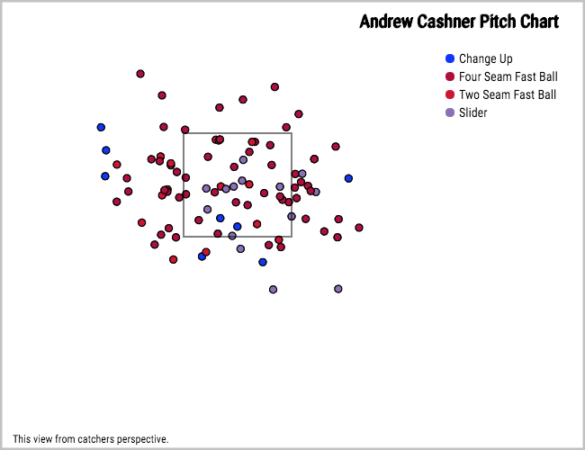
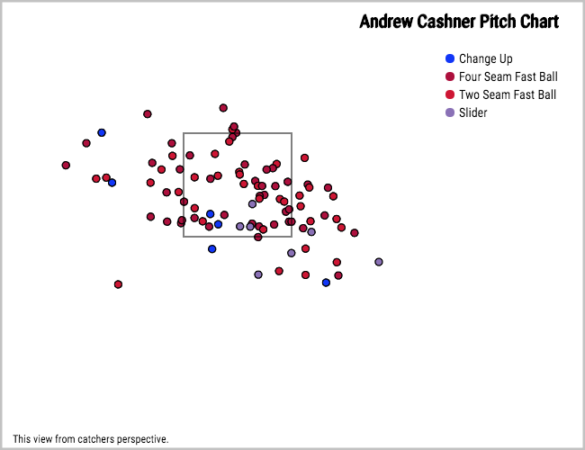
While there doesn’t seem to be too much variance in his pitch location between the two starts, aside from a more centralized zone in his second start, there is some important variance in Cashner’s pitch selection. The most important observation to be made here is Cashner’s varied use of his slider between the two starts. While in the first start the slider was more frequently used, and caught a lot more of the plate, Cashner threw fewer sliders and concentrated them lower in the zone, as well as outside the zone completely.
Beyond that, his fastball and sinker usage was also quite different between the two starts. In his first start, Cashner threw 46 straight fastballs to 26 sinkers according to Brooks Baseball. However, in his second start in Philadelphia, that number changed quite significantly, with Cashner throwing only 35 fastballs compared to 42 sinkers. It’s hard to measure if this was a recipe for success for Cashner on Monday, but the change is quite significant over the course of one start.
One last important thing to note on Cashner’s pitches between his two starts is the velocity increase on his fastball. After averaging 95.4 mph on his fastball in his first start, with a high of 99.3 mph, Cashner added almost a mile and a half per hour on his fastball, as he averaged just a shade under 97 mph at 96.8. The sinker saw an even more significant jump, from an average of 94.1 to 95.8. Even more important for Cashner was the fact that both pitches had increased vertical and horizontal break from one start to the next. It’s hard to say how significant this velocity increase is, but it definitely helped Cashner on the hill on Monday night.
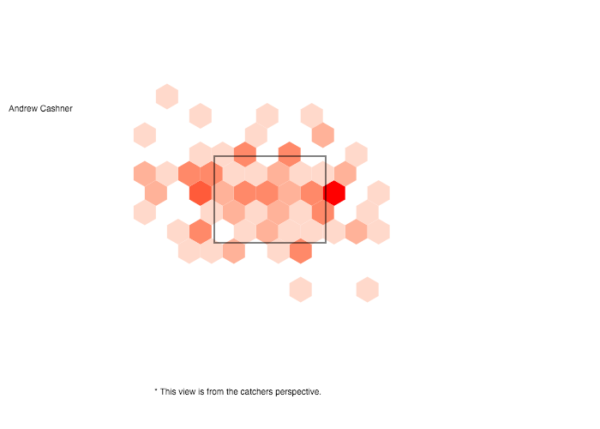
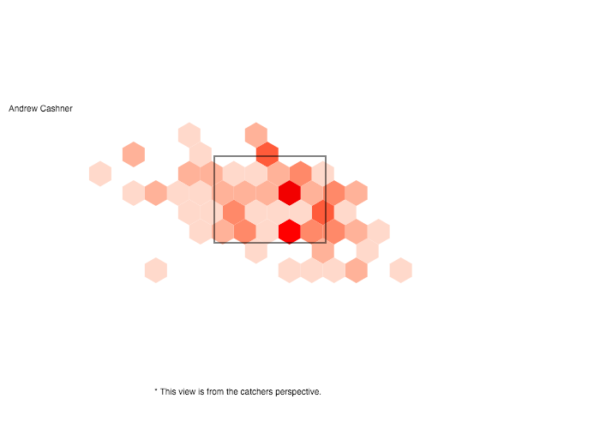
Taking it one step further, Cashner was around the plate with more frequency in his most recent start, throwing only 29 balls, compared to 36 balls in his first start. For Cashner, the second start went much smoother, with his highest pitch count for an inning reaching only 22 pitches. Over the course of his Padres career, high pitch counts and long innings have been one of the biggest weaknesses in Cashner’s overall game.
Finally, the following two tables demonstrate the balls that were put in play and did not result in an out for both of Cashner’s starts.
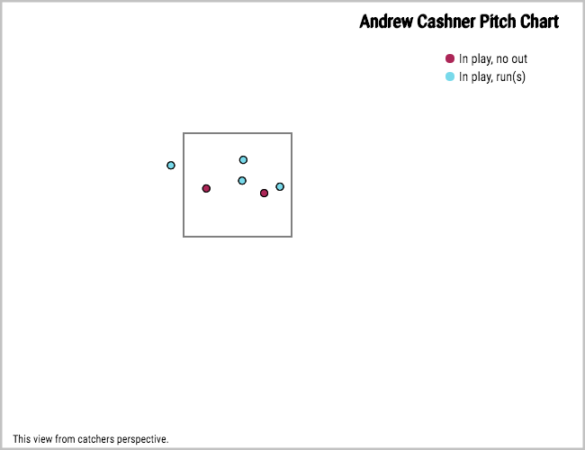
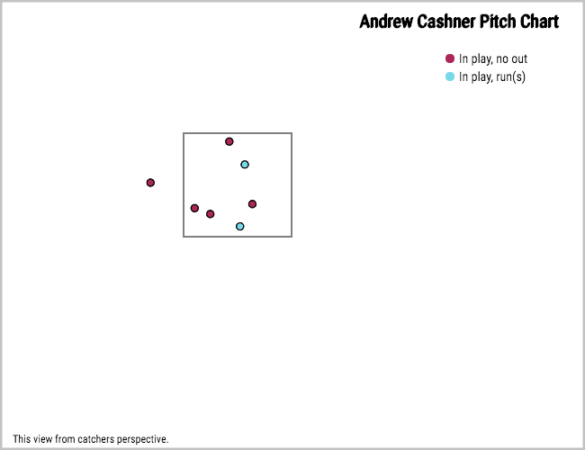
Although the differences seem slight, the pitches that were being hit didn’t catch as much of the plate in his second start as they did in his first. However, the common thread between the two starts is the fact that Cashner’s slider is the pitch that is being hit the hardest, with five of the seven runs he has given up coming on the slider. It’s clear that of all his pitches, his slider has given him the most trouble through his first two starts, as evidenced by his -5.1 runs above average rating on his slider according to the pitch f/x data on fangraphs.com.
There’s obviously a lot of data and information to take in about Andrew Cashner so far this season. In his first start against the Dodgers, Cashner struggled, not only with his location, but also with his pitch selection, leaving too many pitches over the plate. In his second start, Cashner made some noteworthy improvements, including improvements in his pitch location, increases in his velocity and, most importantly, improvements in pitch selection, with less sliders over the plate and in general, and a better mix of fastballs and sinkers compared to his previous start.
Andrew Cashner clearly still has a long way to go to live up to the hype that accompanied him when he was acquired for Anthony Rizzo. While his development has seen both positives and negatives so far this season, there are some encouraging signs. If Cashner can keep up his increased velocity, maintain command on all his pitches, and cut down on the walks and mistakes over the plate, he really could live up to all the expectations that have followed him throughout his time in San Diego. All there’s left to do now is wait.
Editorial and Prospect Writer for East Village Times. Twenty-five years young, Patrick has lived in San Diego for his entire life and has been a Padres fan nearly as long. Patrick lives for baseball and is always looking to learn new things about the game he loves through advanced stats.